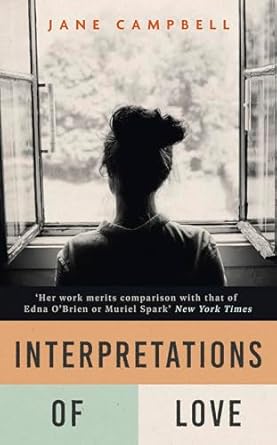3.5 Stars
This novel won the 2023 Giller Prize and was shortlisted for the Booker Prize. For its paperback release, I was given the opportunity to review it.
The narrator, an unnamed woman, moves to an unnamed northern country to become the housekeeper for her eldest brother. Though her ancestors came from this rural region, she doesn’t speak the language. She tries to become part of the community, but she’s treated with suspicion and is blamed for a number of unfortunate events involving animals.
Anyone looking for a dramatic plot should look elsewhere because this book is basically plotless. Little happens other than what I just described. Though there is no overt violence, there is tension. Early on she mentions, “it would have been only one behaviour among many others, truthfully or falsely reported, that would later be held against me.” Once her brother leaves on a business trip, she becomes very isolated, especially because she cannot communicate with anyone. And then the villagers become increasingly suspicious of her.
There is also tension in the fact that the narrator may be unreliable. We are given only her thoughts so there is no way of judging the accuracy of her description of events. For instance, there’s the epigraph: “I can turn the tables and do as I want. I can make women stronger. I can make them obedient and murderous at the same time.” And the narrator muses “Who knew . . . what one might be capable of” and “my obedience had itself taken on a kind of mysterious power” which she feels she “ought to have begun putting it to use. Was an intervention possible?”
Likewise, the ending is ambiguous and leaves the reader with a lot of questions. Readers looking for closure will definitely be frustrated because it is very unclear as to exactly what happens.
The narrator is not a likeable character. She is compliant and meek and quiet, living to serve others. Her goal seems to be to erase herself; from childhood, “I determined to eradicate my pride and my will.” She suffers from a martyr complex, sacrificing her life for others and accepting blame needlessly. So often I wanted to scream at her to stand up for herself, especially in her dealings with her demanding brother.
I can only describe this as a complex and difficult book. The style is almost stream-of-consciousness with run-on sentences and lengthy paragraphs, some so dense as to be impenetrable. Is the author being intentionally humorous by inserting “to make a long story short” in this sentence: “The Department of Agricultural Affairs and its associate authorities had, to make a long story short, given notice to the keepers of domestic fowl that there had been an outbreak of avian flu in one of the neighbouring nations, a nation which had been, at intervals, ally and enemy, occupier and liberator, and that, as a precautionary measure and for an unspecified length of time, all domestic birds, including but not limited to chickens, geese, pigeons, ducks, etcetera, would have to be protected from their wild sisters and brothers, either in coops or in barns, in runs or in homes.” There is no dialogue but there are all sorts of digressions. For instance, at one point the narrator wonders “about the lives of cabbages, their hearts and their vitality.” The formal and elegant prose uses erudite vocabulary like ascesis and aestival. Reading this book requires the reader’s full attention and even then I find that the meaning gets lost because of the excessive wordiness.
There’s a vagueness to the novel. For example, none of the characters are given a name – except for a dog. The country is not named and even the time period is uncertain. There are references to the internet, Twitter and Microsoft Teams, but the villagers seem to live in the past. I imagine the indeterminate setting is to emphasize a universal theme.
In some ways, this is an allegory about anti-Semitism. The narrator gradually reveals her Jewish background and the historical struggles of her people. Reference is made to the phrase “none was too many” and the Holocaust. She even mentions common anti-Semitic stereotypes like the fact that she was always made treasurer of organizations because of her ethnic background. But of course intolerance, bigotry and hostility are directed towards anyone who is different and therefore an outsider because of skin colour, religious beliefs, ethnic background, etc.
What also struck me is the gender dynamics. The narrator is a product of her upbringing which featured her eldest brother taking a particular interest in educating his sister. He told her that she erred in “entertaining the idea that it was reasonable for me to form my own judgements about the world, about the people in it.” He also told her that she had “to reorient all my desires in the service of another, that was the most I should expect to achieve.” When she moves in with him, he decides what she must do and she acquiesces because she has been taught to be subservient and submissive, even though her opinion of men is not high: “they were constitutionally incapable of being alone, terrified of not being admired, and seemed to regard ageing and its effects as a personal failing.”
One cannot but admire the writer’s innovative use of language but the book’s complexity and its unrelenting bleakness do not make it an enjoyable read. Some will undoubtedly find it downright inaccessible. I’m certain I missed a great deal, but I’m not motivated to re-read it at this time. I would need to complete a study for patience first!
Note: I received an eARC from the publisher via NetGalley.








